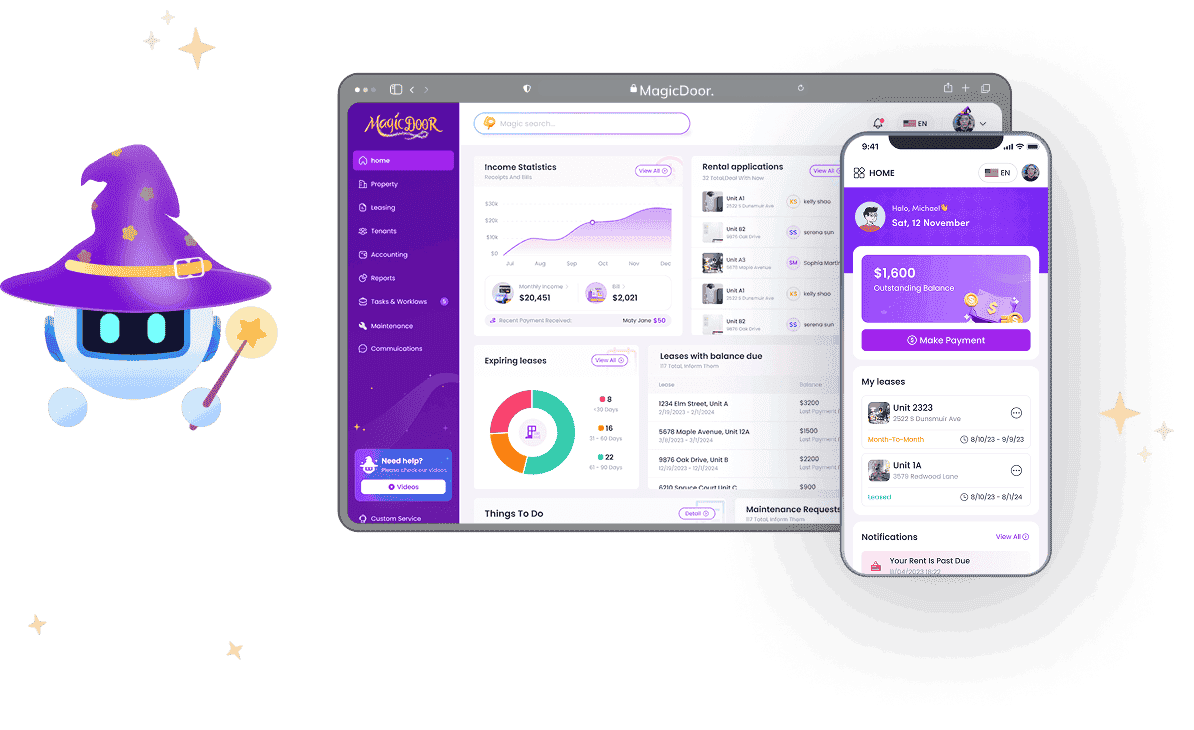Managing rentals sounds simple, until it isn’t.
Small landlords often deal with missed rent payments, lease files buried in inboxes, and repairs tracked on sticky notes. Manual tools might work at first, but they fall apart fast once you add a second unit or a new tenant.
That’s where property management software changes the game. It helps landlords manage properties in one place, from screening tenants and collecting rent to responding to maintenance issues and tracking renewals.
In this guide, you’ll find:
- A breakdown of the best tools for small portfolios
- Side-by-side comparisons of features that actually matter
- Tips for choosing the right platform based on how you work
Some platforms focus on financials. Others lean into automation. A few try to do it all.
Keep reading to see which tools are worth your time, and which one might finally take rent day off your to-do list.
What is Property Management?
Property management is the process of running rental properties day-to-day. It includes everything from collecting rent and managing lease agreements to handling maintenance, tenant communication, and bookkeeping.
For small landlords, doing all of this manually gets old fast.
That’s where property management software steps in. It centralizes management tasks, like scheduling repairs, sending rent reminders, and storing tenant records, so you’re not jumping between apps or chasing down payments.
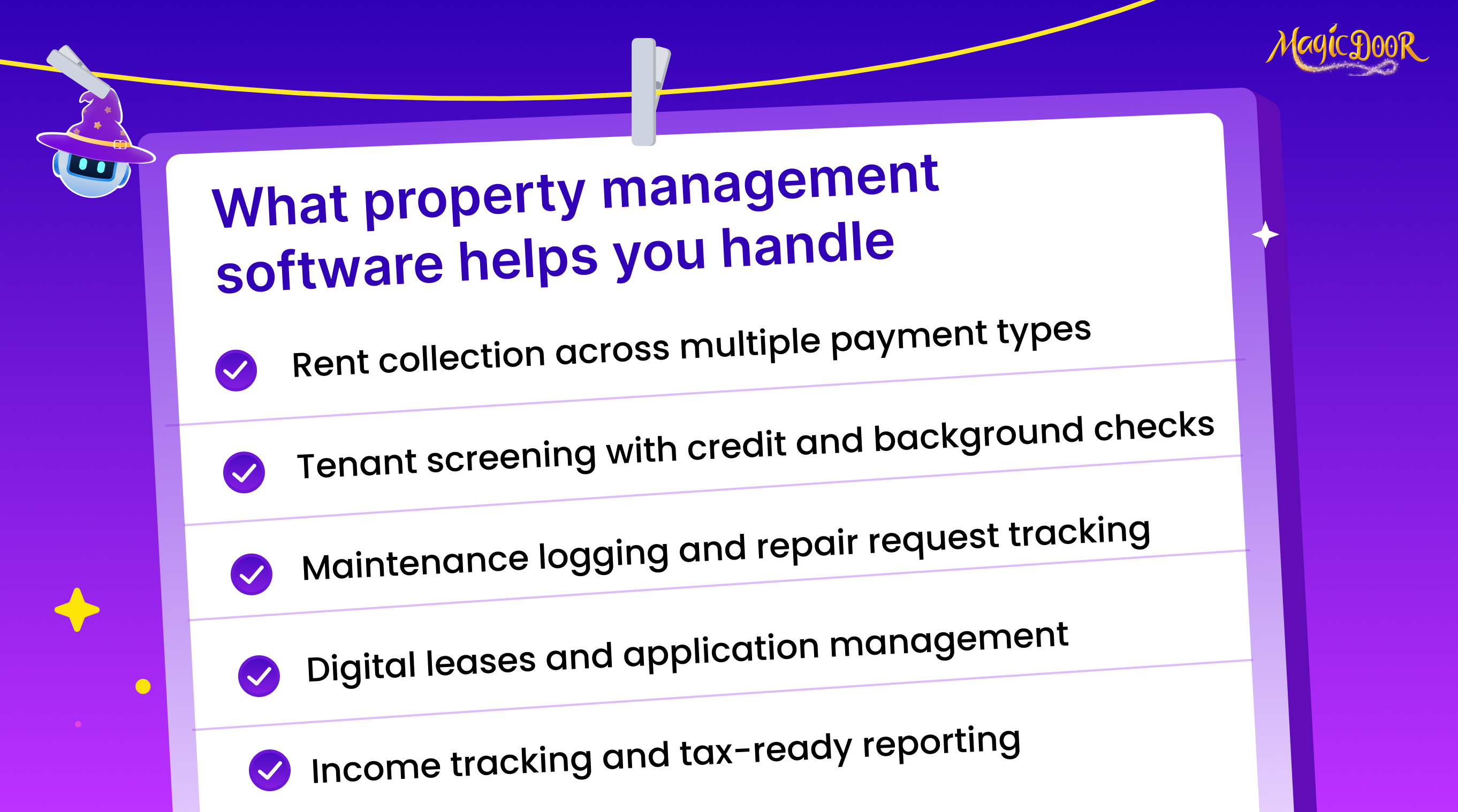
Most modern tools help you:
- Collect rent online through debit cards, ACH, or recurring payments
- Screen tenants using background checks and financial reports
- Track maintenance requests and property expenses
- Sign lease agreements digitally and organize rental applications
- Monitor cash flow and generate reports for tax filing
Some rental management software also supports online listings, lets you customize rental applications, and helps landlords manage multiple rental properties from one account.
If you’re a property owner managing more than one unit, or just tired of sending late fee texts, it’s probably time to switch to a cloud-based platform that saves time and helps you stay on the same page with tenants.
What is Property Management Software for Landlords?
Property management software for landlords is a digital tool that helps rental property owners manage day-to-day operations from a single platform. It replaces dispersed spreadsheets, inboxes, and manual rent collection with a system built specifically for rental properties.
Most rental property management software covers three main functions: collecting rent, handling maintenance requests, and managing lease agreements.
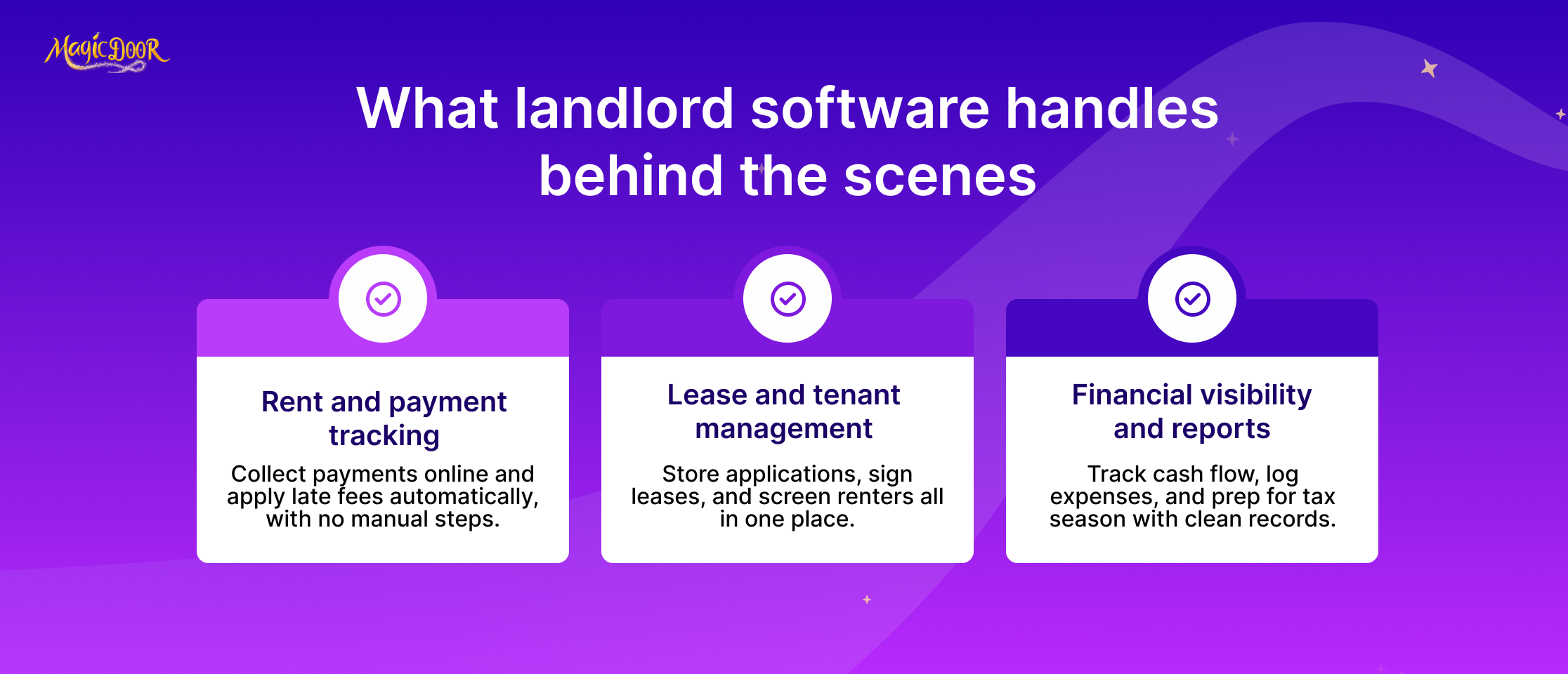
With the right setup, landlords managing even just a few units can:
- Collect rent online through bank transfers, ACH, or debit card payments
- Track late fees automatically and send automated rent reminders
- Accept and store online rental applications
- Screen tenants using background checks and screening reports
- Keep every lease agreement in a centralized location
- Review cash flow, expenses, and generate financial reports during tax season
Small portfolios need a different kind of support than large firms. Most real estate professionals with hundreds of units use software built for teams.
Features to Look For in Small Landlord Tools
Online Payments & Rent Collection Software
Collecting rent should be predictable, not a monthly guessing game.
Tools with online rent collection let property owners set due dates, accept payments via ACH, debit card, or bank transfer, and automatically track overdue payments.
Most property management software built for small landlords now includes features like:
- Scheduled rent reminders
- Auto-applied late fees
- Easy payment tracking inside one centralized system
With a setup like this, tenants can pay online with just a few clicks. Landlords get alerts when rent payments come in, and funds go directly into the connected bank account, no pursuing, no manual logging.
The best rental property management software balances flexibility with simplicity.
Whether you're managing two units or ten, you want a tool that makes it easy to collect payments, track rental income, and keep records ready for financial management and tax filing.
Maintenance & Repair Tracking for Rentals
Every landlord gets the 7 a.m. text: “The sink’s leaking again.” That’s why maintenance management tools are a must, even for small portfolios.
With the right rental management software, tenants can submit maintenance requests through a mobile app or portal. With a few clicks, you can log costs, assign vendors, and update request statuses.
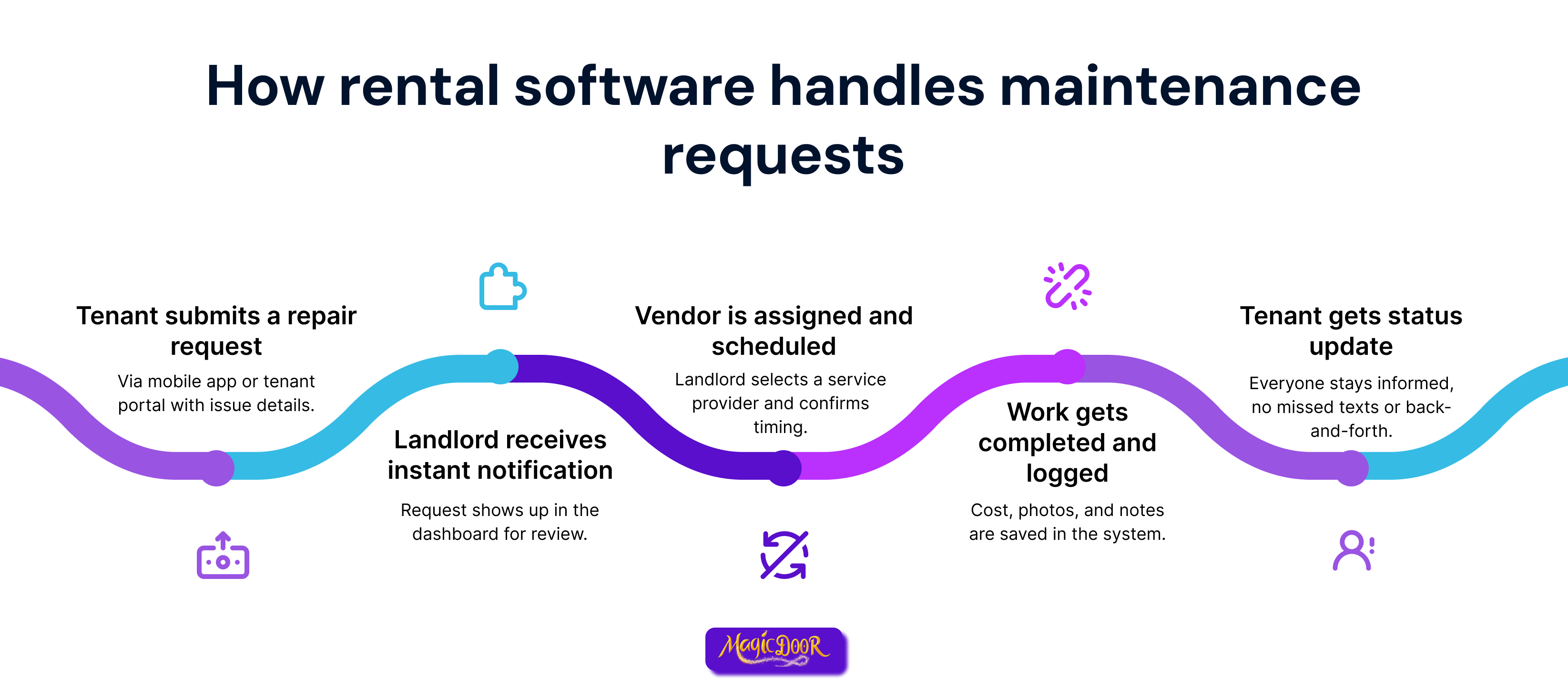
These tools help you:
- Keep rental house repair records organized
- See maintenance history by unit
- Communicate faster with tenants and contractors
Small landlords often overlook this feature.
But once maintenance requests start piling up, it’s clear how important it is to have a system in place. A good property management tool gives you visibility, saves time, and keeps everyone on the same page, including tenants waiting for updates.
Lease & Tenant Management
Lease paperwork is still one of the biggest time drains for DIY landlords who need tenant management features. A better system starts with software that helps you sign lease agreements, store documents, and manage renewals in one place.
Modern rental management software allows you to:
- Upload and share state-specific lease agreements
- Store signed files securely under each tenant profile
- Track key dates like move-ins, move-outs, and renewals
Many tools also support rental applications and screening reports, so you can evaluate a potential tenant's financial history before you send a lease. This means less guesswork, and more confidence that you’re placing quality tenants.
And when issues come up, centralized communication keeps both sides aligned, reducing confusion over lease agreements or missed updates during the rental process.
Accounting & Reporting Dashboards
Small landlords need accurate numbers to make smart decisions, not spreadsheets that get updated once a month.
Built-in dashboards in property management software help you:
- Track rental income, deposits, and expenses by unit
- Break out vendor costs or service fees
- Export clean, simple financial reports for taxes or investors
The best management software shows everything clearly: past payments, open balances, and expected income. This kind of visibility helps you spot issues early, like missed rent payments or irregular charges, and act before they snowball.
If you're managing a few rental properties on your own, these tools keep things clean. No toggling between bank statements and invoices. Just log in, and it’s all there.
Top 22 Property Management Software for Small Landlords (Updated 2025)
1. MagicDoor

MagicDoor is a U.S.-based property management software built for small landlords, with one major advantage: it runs on Agentic AI. That means it doesn’t just store data, it actually helps you manage day-to-day tasks.
From tracking late rent payments to flagging missing lease details, MagicDoor is a smart assistant adjusted to how landlords really work.
Made by landlords and engineers, MagicDoor eliminates the busywork that slows down rental management, without locking features behind a paywall. Yes, MagicDoor is free!
Main features include:
- Online rent collection via ACH or debit card
- Smart alerts for unpaid rent, missing files, or expiring leases
- Built-in messaging to stay on the same page with tenants
- AI-powered lease review and task reminders
- Maintenance request tracking with status updates
- Rental listing templates and screening tools
- Mobile access for landlords and tenants
MagicDoor automates repetitive steps so you can focus on growing your portfolio or just getting your time back. For small landlords looking for more than a spreadsheet with a login screen, it’s the all-in-one platform that actually works for them.
2. Buildium

Buildium is a long-standing property management software built for professional property managers, especially those handling large multi-family rentals or community associations. It covers everything from lease agreements to financial reporting, with tools that scale well for teams.
Standout features:
- Full rent collection and ACH fee tracking
- Work order system for maintenance requests
- Document sharing and lease management
- Owner portal and reporting tools
- Support for custom workflows and approval chains
For small landlords, it may feel complex, but its depth is useful if you manage more than just a few rental properties.
3. Avail
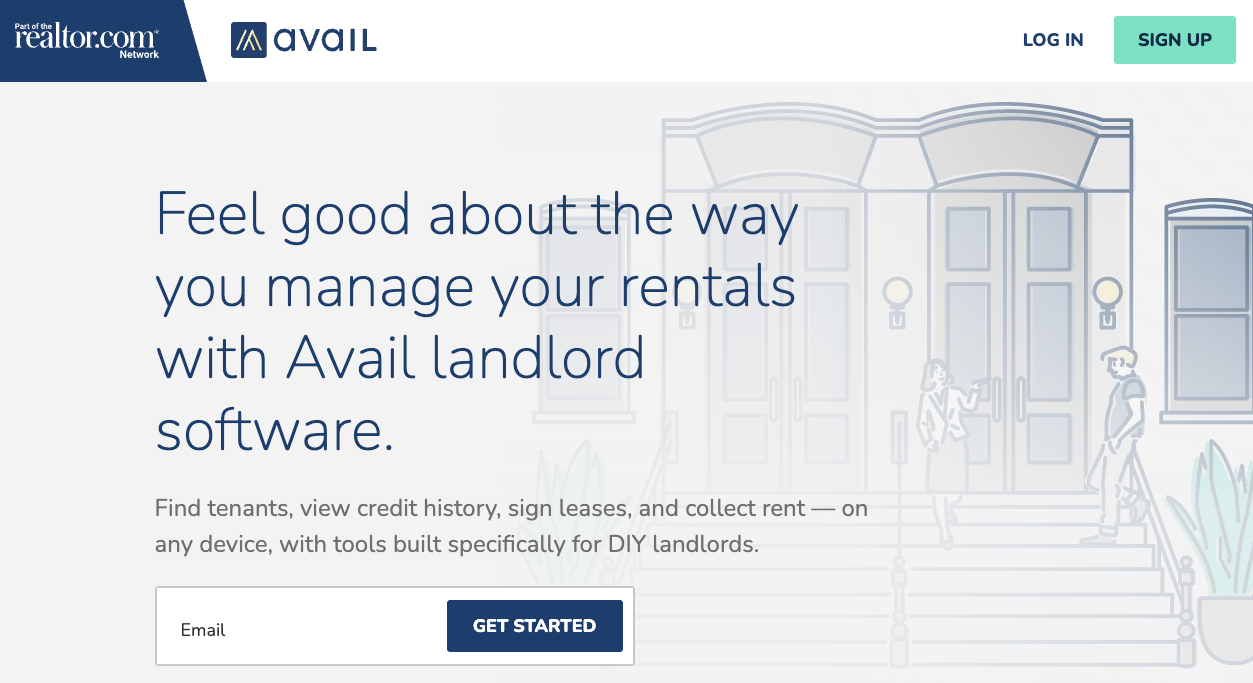
Avail is a rental property management software developed for individual landlords. It offers a clean dashboard, simple tenant screening, and tools to collect rent payments directly to your bank account.
Its pricing is tiered, with a free plan that works for the basics and paid options to unlock extras like custom applications or waived ACH fees.
Key features:
- Online rent collection with optional auto-pay
- Application and background check tools
- Maintenance ticket tracking
- Templates for rental listings and leases
- Mobile access and messaging
It’s a solid option for first-time landlords who want to manage properties without too much setup, but those looking for deeper automation may want more.
4. TenantCloud
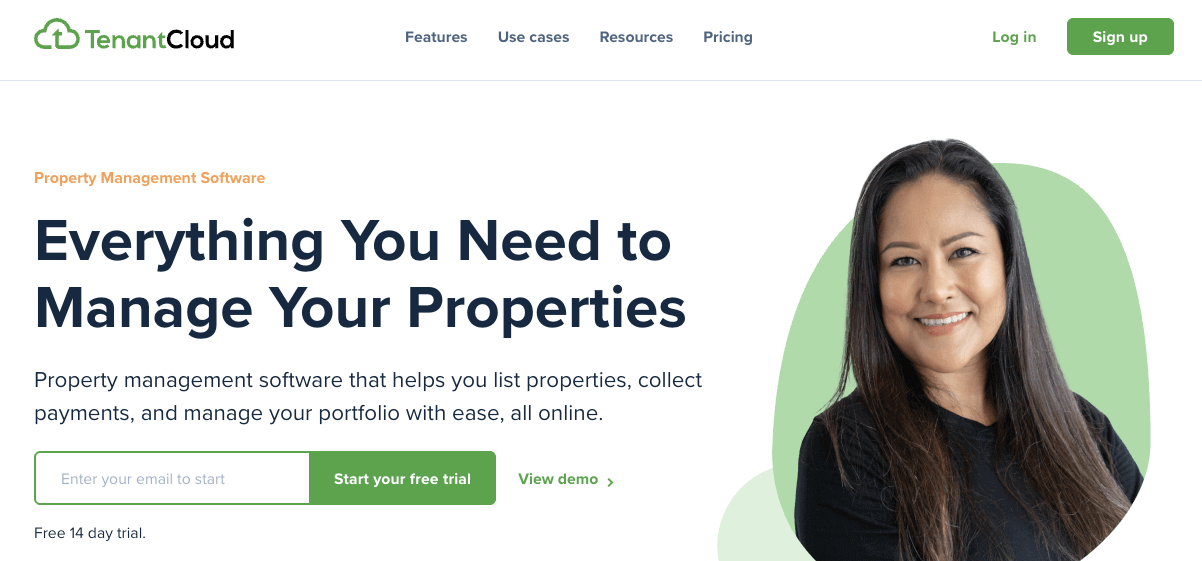
TenantCloud is an all-in-one software that combines traditional features with some light automation. It’s a good fit for small landlords managing multiple units, with tools to handle maintenance management, listing syndication, and accounting.
It offers a generous free tier and several upgrade paths, depending on how many units you manage.
What’s included:
- Rent invoicing and online rent collection
- Lease templates and e-signing tools
- Maintenance requests with photo uploads
- Expense tracking and recurring payments
- Dashboard for both tenants and landlords
TenantCloud works well for DIY landlords who want flexible pricing and a system that grows with their portfolio, but it lacks the deeper AI support that some newer platforms now offer.
5. RentRedi
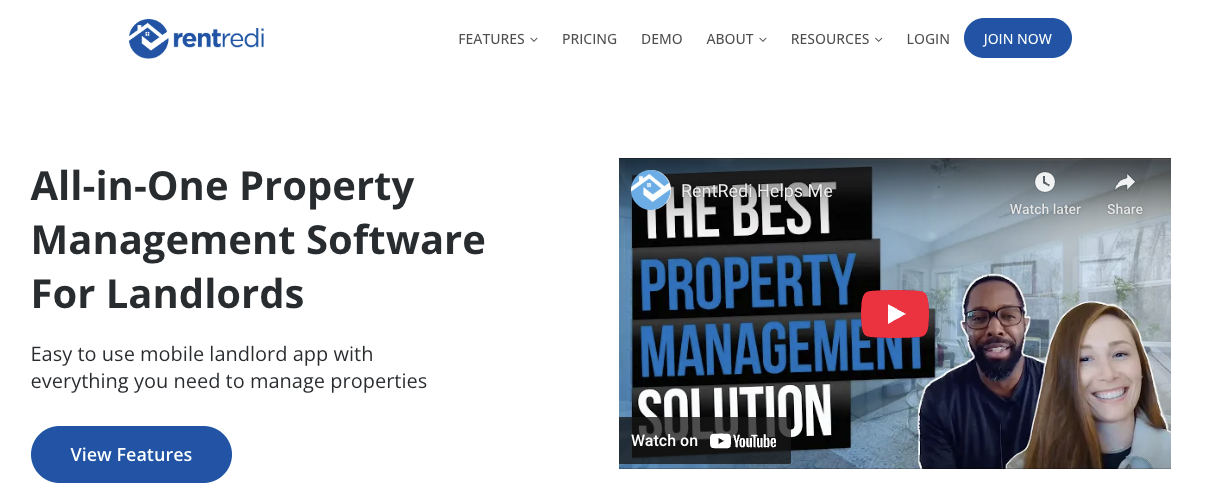
RentRedi is a mobile-first property management software designed with small landlords in mind. It focuses heavily on ease of use, offering tools that help owners manage day-to-day operations from their phone.
Key features:
- Mobile-first rent collection with auto-pay options
- Tenant screening with credit, criminal, and eviction checks
- Maintenance tracking with in-app messaging
- Application and lease storage
- Dashboard to manage multiple rental properties
The layout is clean, and the support team is highly rated, making it a good pick for owners who prioritize mobile convenience over desktop dashboards.
6. Innago
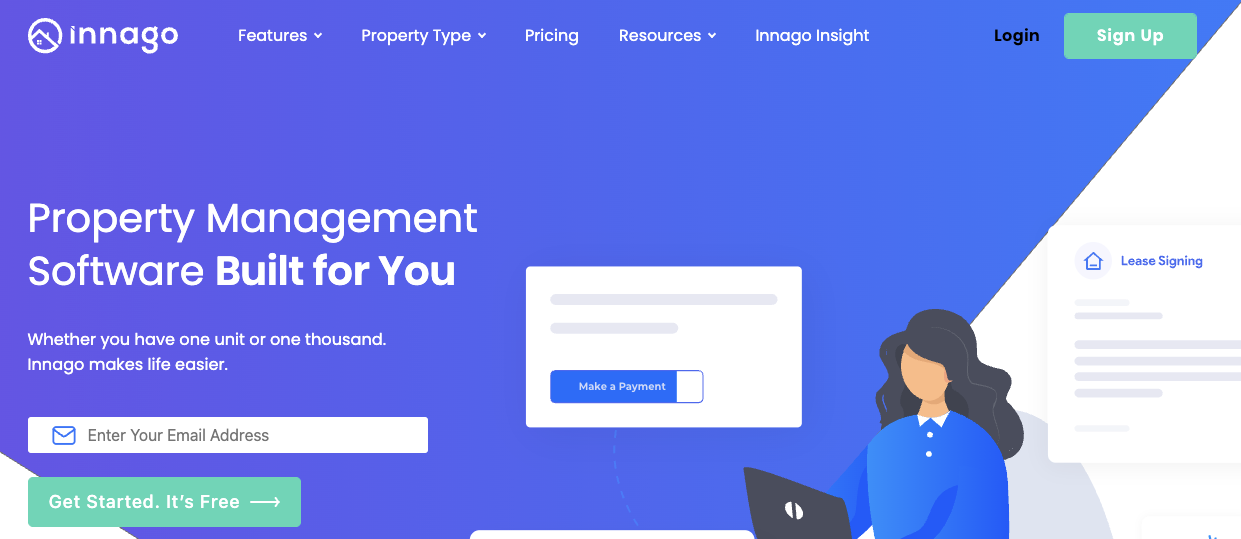
Innago is a free rental property management software that provides strong value for landlords managing fewer than 50 units. It covers the basics well, offering key features that support tenant onboarding and income tracking.
Included tools:
- Online rent collection with automatic reminders
- E-signature support for lease management
- Application tracking and tenant screening
- Dashboard for maintenance and repair updates
- Export-ready reports for financial organization
Innago stands out for its no-cost pricing model and focus on usability, though some advanced property management tools are limited or only available through integrations.
7. DoorLoop
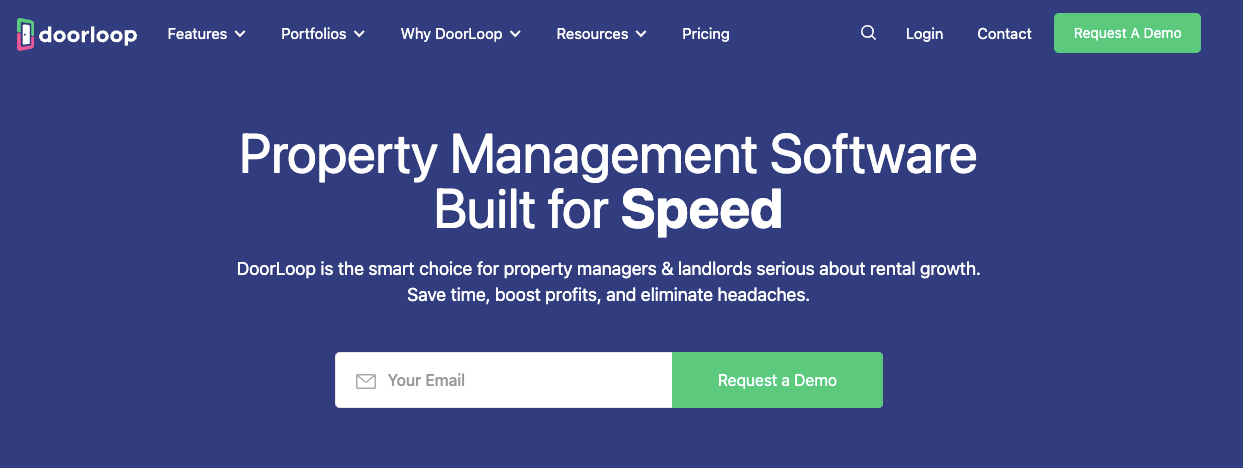
DoorLoop is a newer management software solution gaining traction for its polished interface and fast onboarding. It offers a full suite of tools tailored to solo property owners and mid-sized teams.
Top features:
- Rent tracking and online rent collection
- Maintenance ticketing and vendor coordination
- Lease templates and auto-fill fields
- Built-in CRM for tracking prospective tenants
- Financial and occupancy reporting
DoorLoop combines solid usability with a wide feature set, making it a good choice for landlords looking to consolidate tasks like lease management and maintenance requests under one login.
8. RentManager

RentManager is a robust property management software platform designed for portfolios that need detailed customization and accounting features. It’s better suited for landlords with growing operations or who plan to manage dozens of rental properties.
What it includes:
- Advanced accounting with bank sync and reporting
- Built-in CRM for prospective tenants and vendors
- Service requests and maintenance management
- Marketing tools for rental listings
- Tenant portal for payments and messages
The platform is powerful, but may feel complex for first-time property owners looking for simple lease management and payment tools.
9. Propertyware
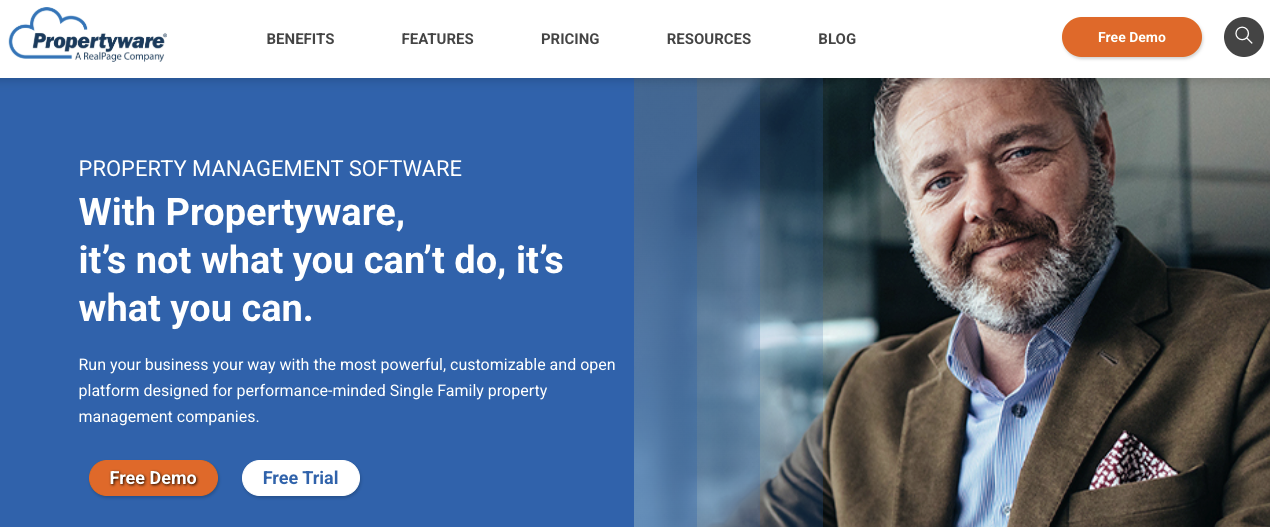
Propertyware focuses on single-family homes and smaller scattered-site portfolios. It’s a popular choice among property managers who need flexibility, particularly for customizing lease agreements, workflows, and tenant screening processes.
Key features:
- Full-featured online rent collection
- Custom lease forms and document sharing
- Submit maintenance requests with status updates
- Owner portals with reporting and communication
- Integration-friendly for accounting or marketing
Though it offers all the features a professional would expect, it’s better for landlords who are already comfortable with management software and want control over detailed settings.
10. Yardi Breeze
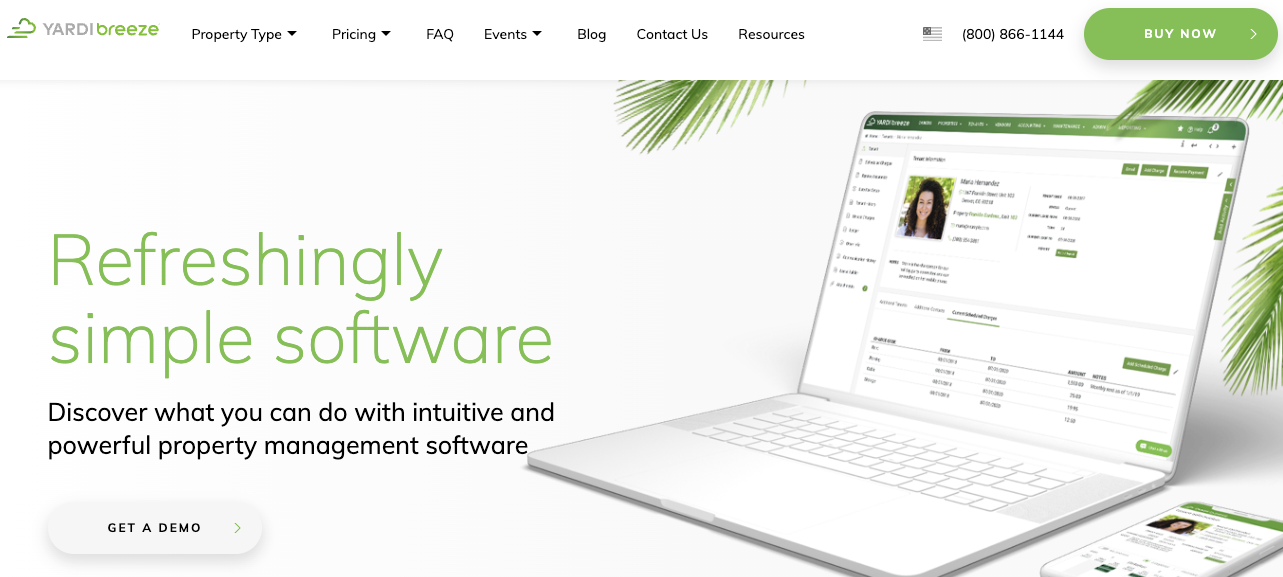
Yardi Breeze is a simplified version of Yardi’s enterprise software, built to help small and mid-sized landlords manage properties with less friction. The interface is simpler than their pro products, but still includes solid automation and reporting tools.
Standout tools:
- Tenant screening and applications
- Mobile apps for landlords and renters
- Payment tracking and rent payments via card or ACH
- Maintenance request workflows
- Branded portals for tenants and owners
For property owners who want a trusted name with fewer complications, Breeze offers a middle ground, professional tools without enterprise complexity.
11. Entrata
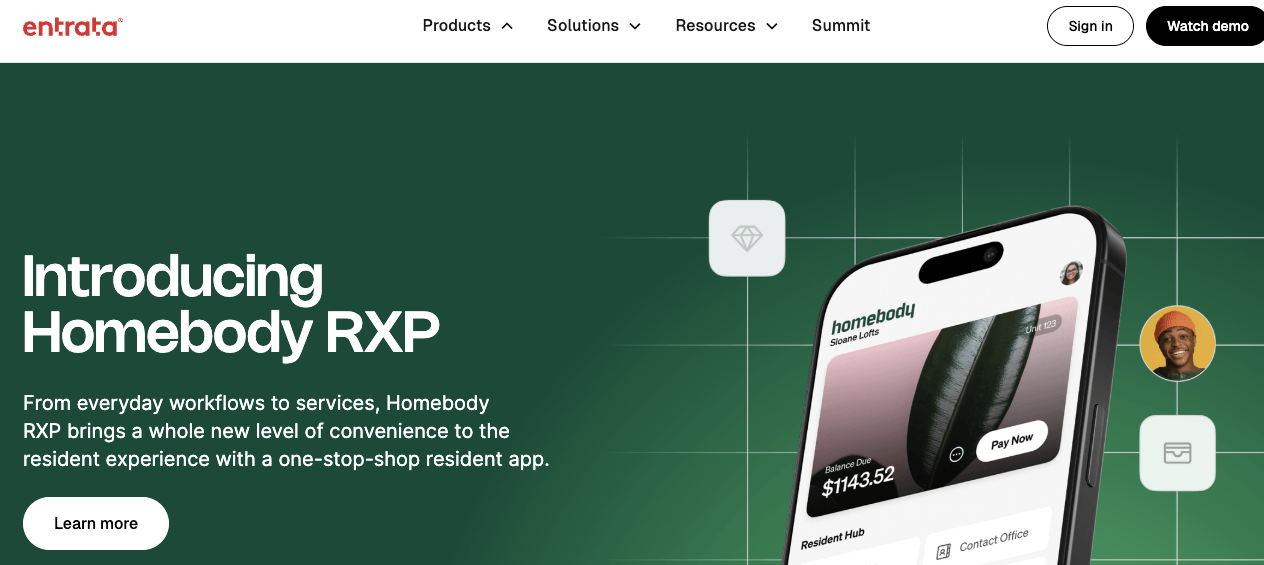
Entrata is a high-powered property management software built primarily for larger portfolios, but it offers tools that small landlords can use, especially those managing multi-unit buildings or student housing.
Key features:
- Marketing tools to list rental properties and track leads
- Integrated tenant screening and lease generation
- Secure online rent collection and deposit tracking
- Resident portals for service requests and payments
- Dashboards for task workflows and reporting
Entrata leans more toward tech-savvy property managers, but smaller landlords with long-term growth plans may find it useful if they need depth now rather than later.
12. RentecDirect
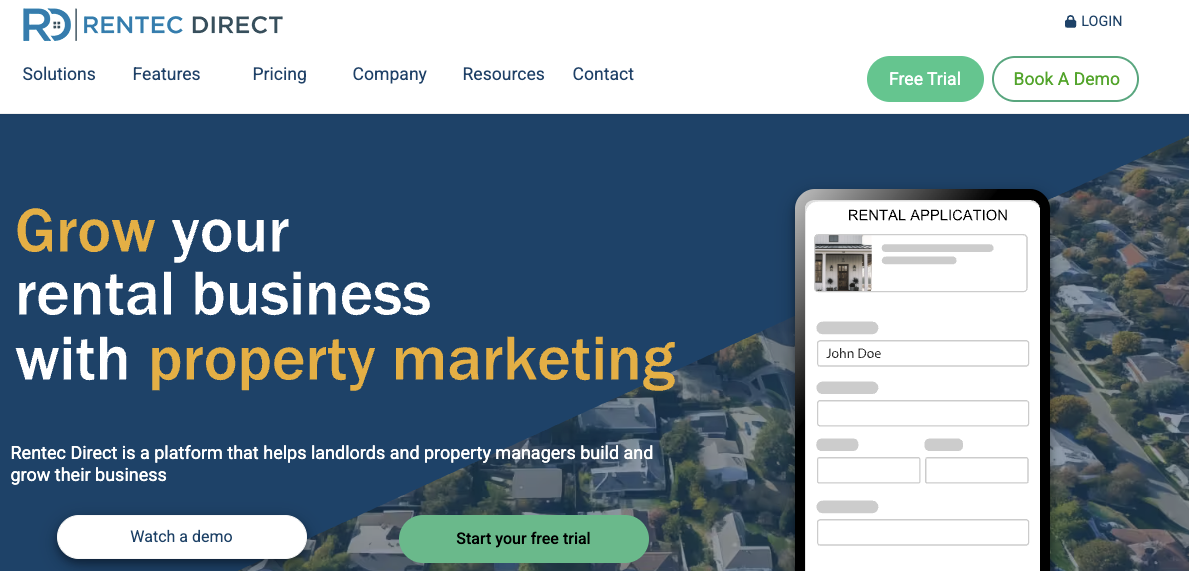
RentecDirect is a solid, affordable option for independent property owners looking for practical management software without a steep learning curve. It’s popular with those managing under 100 units and offers flexible features for daily operations.
Highlights:
- Online rent collection with automatic receipts
- Track maintenance, vendors, and work orders
- Secure file storage for leases and documents
- Credit and background checks for potential tenants
- Customizable rental listings and marketing tools
Rentec Direct is built to help landlords manage properties efficiently and stay organized, especially if they prefer a desktop-based system over mobile-first apps.
13. AppFolio
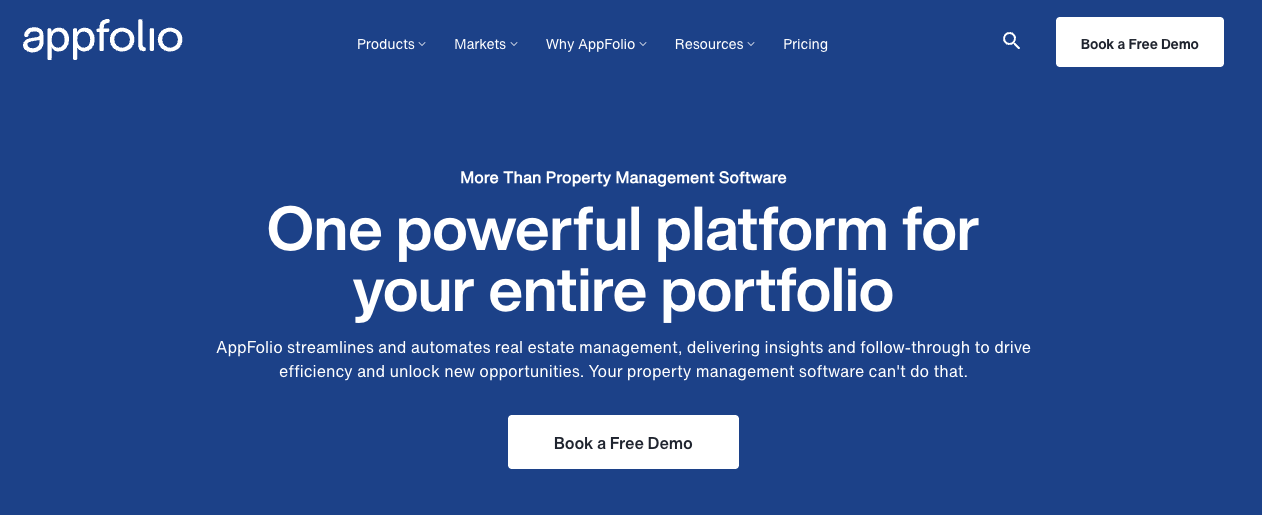
AppFolio is one of the most recognized names in rental property management software, known for its sleek interface and powerful automation tools. It's designed for larger portfolios, but some small landlords still opt in for its tech-forward features.
Core tools:
- Digital tenant screening and leasing
- Full accounting suite with built-in rent tracking
- AI-assisted maintenance coordination
- Central dashboard for managing rental properties
- Mobile app support for managers and residents
AppFolio delivers strong tools, though it’s typically a better fit for property managers than for solo landlords who prefer simplicity over feature depth.
14. ResMan
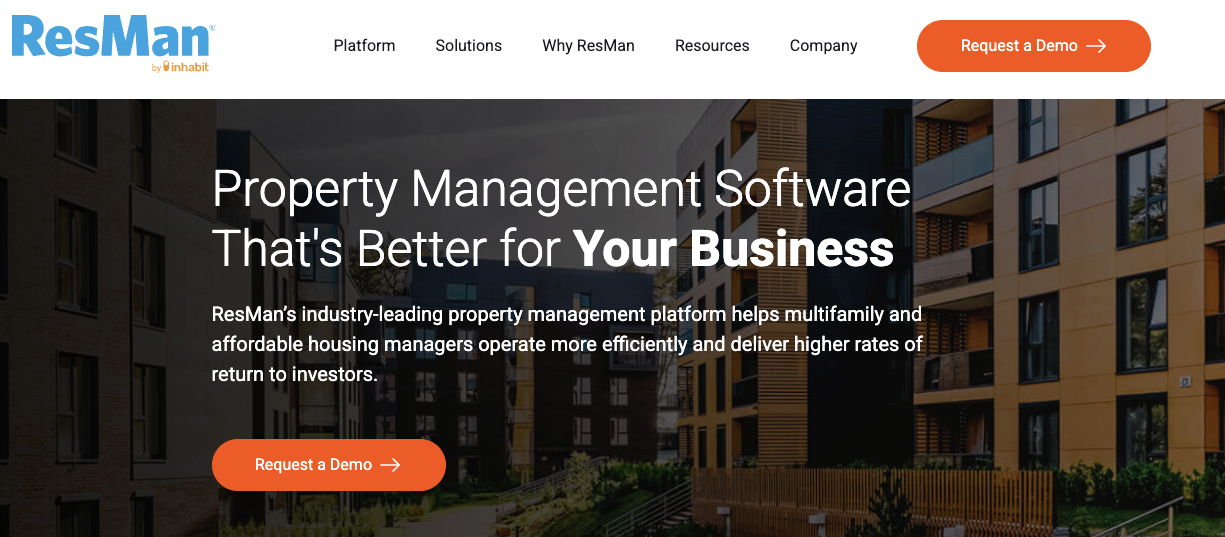
ResMan is a full-service property management software platform built for multifamily and affordable housing portfolios. While it’s typically used by larger property managers, smaller operators managing community-style rentals might find its feature depth useful.
What it offers:
- Centralized dashboard for payments, leases, and resident data
- Integrated CRM for leasing and lead tracking
- Automated workflows for renewals and communication
- Tools to market properties and manage renewals
- Support for affordable and compliance-based housing
It’s not the simplest system to learn, but ResMan offers strong tools if you’re managing multiple tenants across a few dense buildings.
15. EliseAI
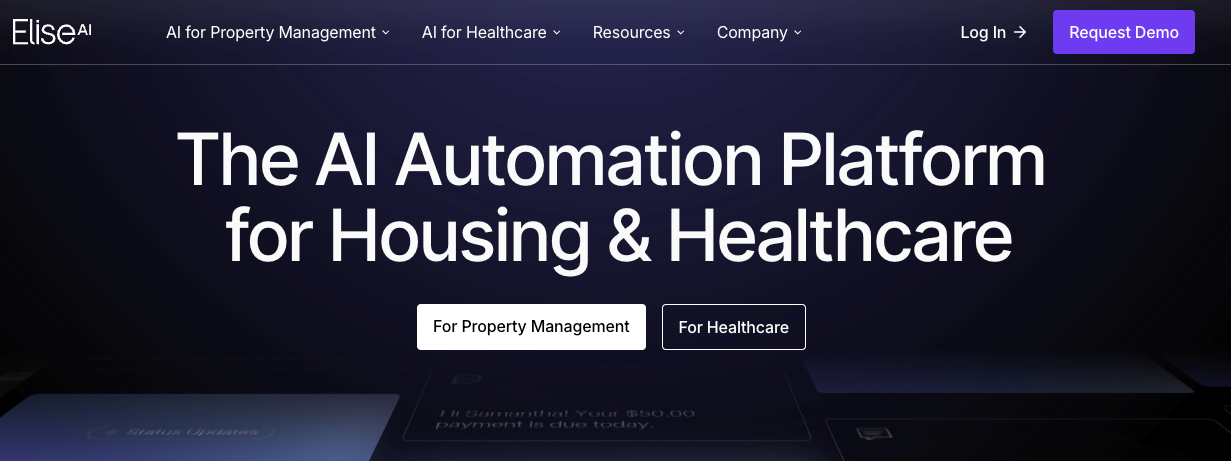
EliseAI isn’t a traditional management software, but rather an AI leasing assistant that integrates into existing platforms. It’s ideal for landlords who want to automate lead response and follow-up, particularly across multiple rental listings.
Key functions:
- AI chatbot for leasing inquiries
- 24/7 response to prospective renter questions
- Calendar syncing and appointment setting
- Custom answers based on your listing data
- Works with most major property management platforms
EliseAI doesn’t help you manage properties directly, but it reduces the manual back-and-forth that comes with tenant outreach and lead follow-up.
16. Visitt
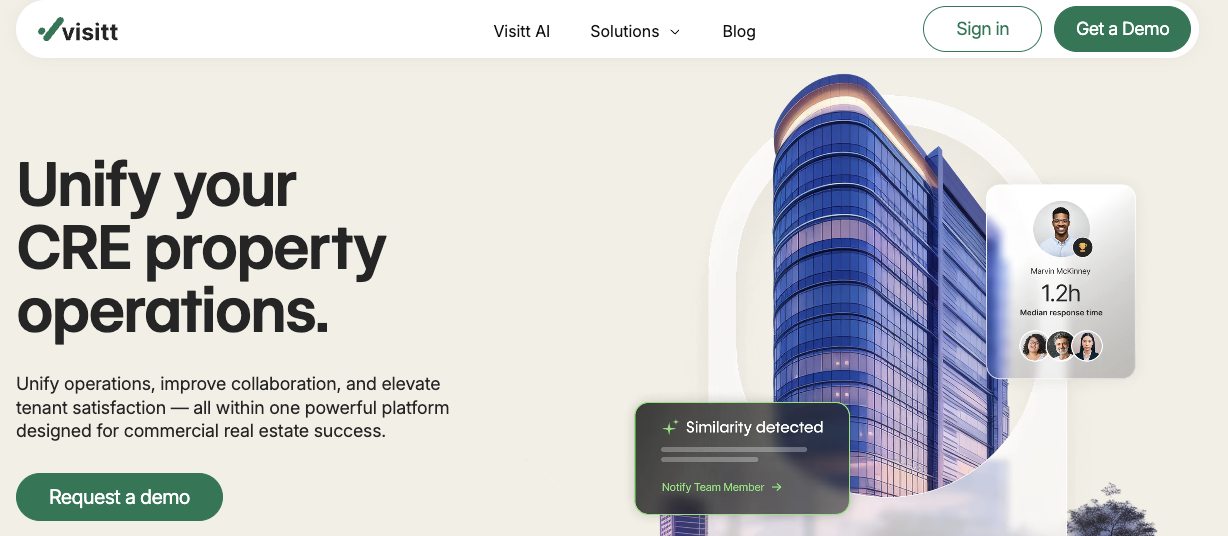
Visitt is maintenance-first property management software designed for residential buildings. It’s particularly strong at helping landlords track issues, schedule repairs, and communicate with tenants, all from one app.
Features:
- Maintenance ticket logging and real-time updates
- Shared team calendar and inspection tracking
- Mobile access for vendors and tenants
- Dashboards for operational insights
- Integrations for rent tracking and task assignments
While it lacks deep tenant screening or leasing workflows, Visitt is a practical choice for landlords who prioritize maintenance efficiency and smooth building operations.
17. Flex
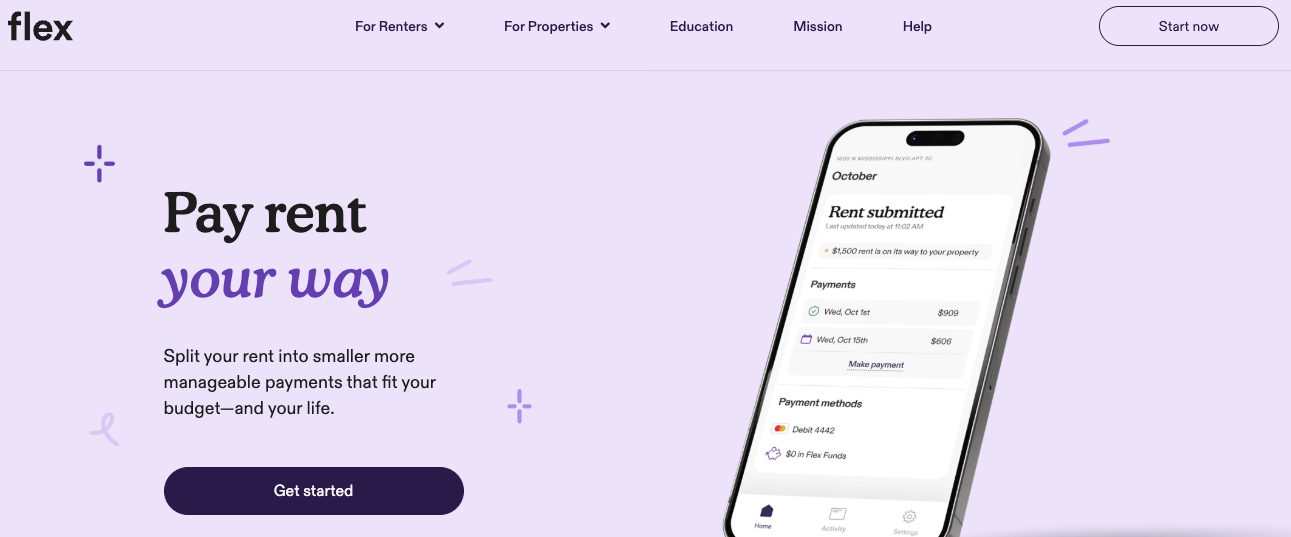
Flex isn’t full property management software, but it integrates with your existing system to offer tenants flexibility in how they handle rent payments. It works by splitting rent into smaller installments, helping renters pay on time while giving landlords predictability.
Key features:
- Flexible payment plans for tenants
- On-time full payments delivered to landlords
- Works alongside most property management platforms
- Credit reporting for tenant accountability
- No extra steps for property managers after setup
Flex can be a helpful add-on for small landlords with tenants who prefer options, but it doesn’t help you manage properties directly.
18. Azibo
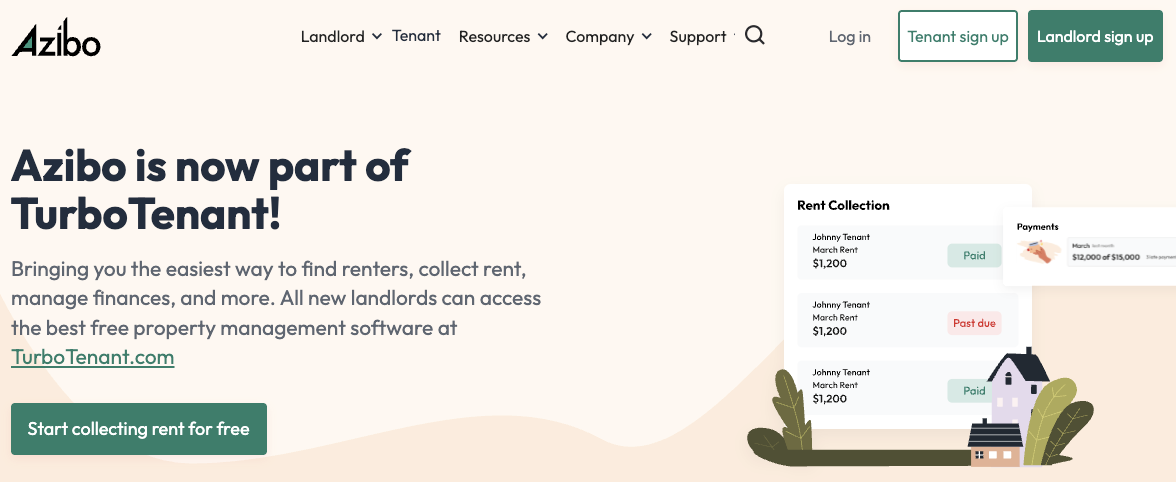
Azibo offers financial tools for independent landlords, blending elements of management software with banking features. It’s built to help property owners stay organized with rent tracking, tax prep, and unit-level insights.
Offerings:
- Online rent collection and recurring charges
- Expense categorization and year-end reports
- Free landlord checking account
- Templates for leases and applications
- Financial dashboards by property or portfolio
Azibo doesn’t cover everything, but its focus on landlord banking and simple automation makes it a valuable supplement to traditional property management tools.
19. Baselane
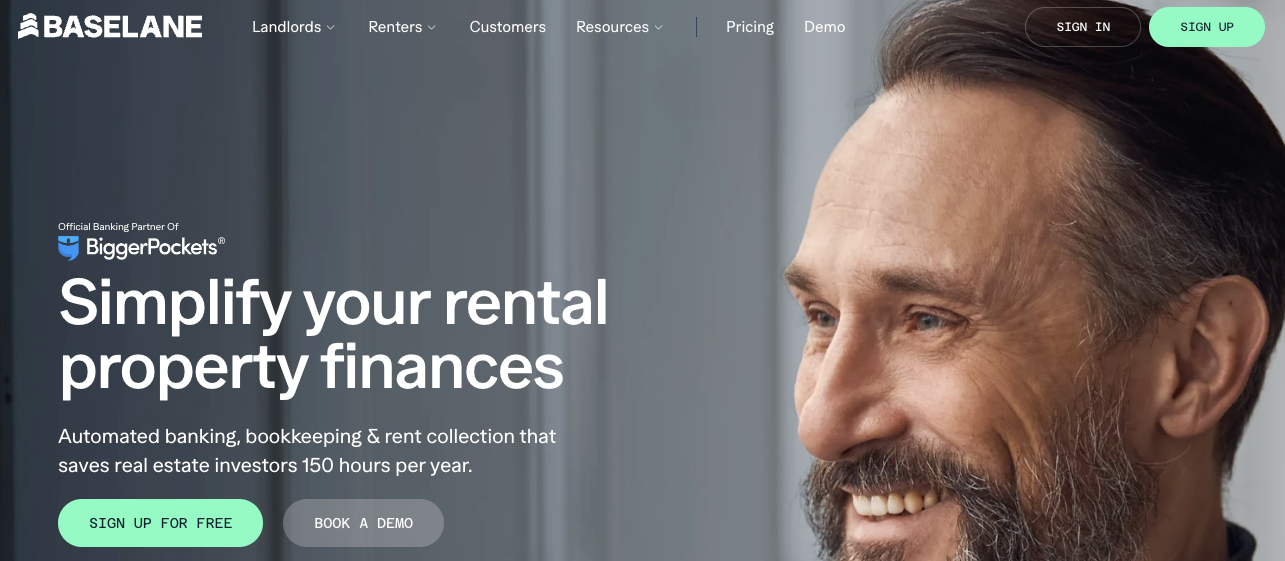
Baselane combines rental banking and bookkeeping in one place, designed specifically for landlords who want tighter control over income, expenses, and financial planning.
What it includes:
- Integrated banking with virtual accounts
- Automatic rent deposits and transaction tracking
- Expense sorting by unit or category
- Budgeting tools for repairs and improvements
- Export-ready financials for tax season
Baselane doesn’t offer rental listings or leasing workflows, but its clean financial tools make it a strong companion for landlords already using separate property management software.
20. TurboTenant
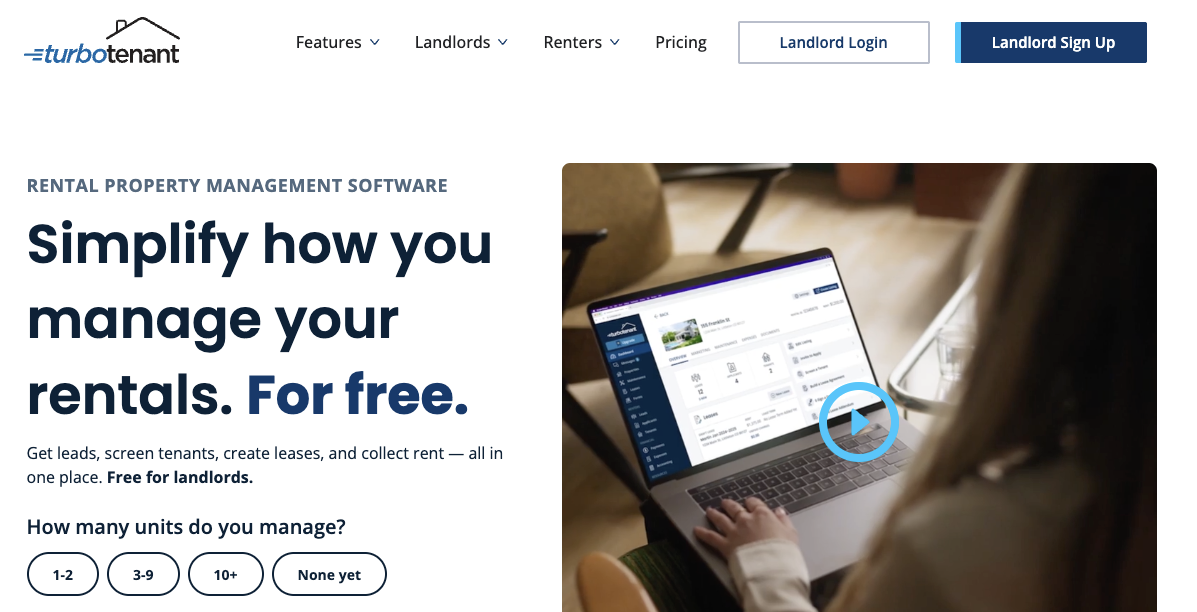
TurboTenant is a lightweight, easy-to-use property management software built for individual landlords. It focuses on tenant onboarding, making it a solid option for those who want help with rental listings, applications, and lease signing.
Features:
- Syndicate listings to major platforms
- Built-in rental application and screening
- Electronic lease signing templates and e-signatures
- Basic rent payments via bank transfer
- Messaging and document storage
It’s a good match for small-scale property managers who prioritize front-end tenant tasks over backend accounting.
21. Hemlane
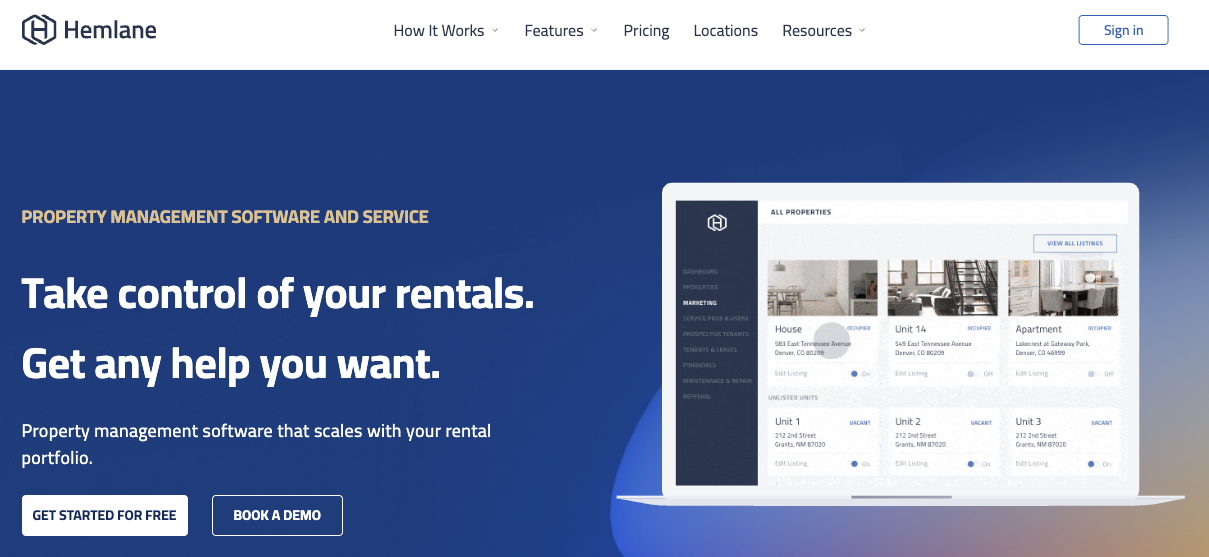
Hemlane is a hybrid management software that combines tech automation with optional local agent support. It’s designed for landlords who want to be hands-off with showings, maintenance, or tenant communication.
What it offers:
- Rental advertising and inquiry handling
- Lease tracking and rent collection
- Optional agent services for showings and inspections
- Repair coordination with vendor access
- Compliance reminders for late notices and renewals
Hemlane leans toward landlords managing from a distance or managing multiple rental properties without day-to-day involvement.
22. LandlordStudio
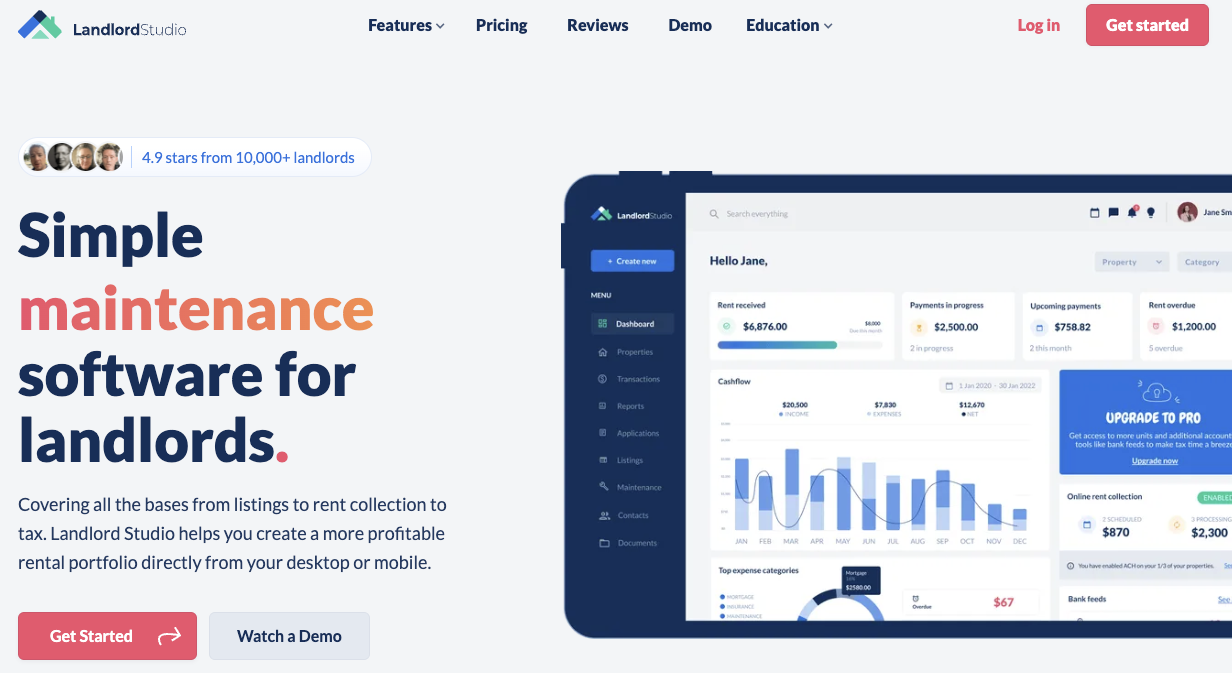
LandlordStudio is a finance-focused property management tool that helps landlords keep track of income, expenses, and tax-ready records. It works well for landlords who already have their leasing systems but need better visibility into their numbers.
Main features:
- Real-time rent tracking and automated reminders
- In-app receipt scanning and expense logging
- Mileage tracking for tax deductions
- Mobile dashboard for unit performance
- Exportable reports for end-of-year filing
For landlords who care more about money than messaging, LandlordStudio fills a clear gap in the property management software space.
MagicDoor vs Other Landlord Software Tools
Most property management software gives landlords some combination of rent tracking, document storage, and messaging, but the differences show up in how much work the software actually takes off your plate.
MagicDoor automates the routine tasks that usually eat up your time.
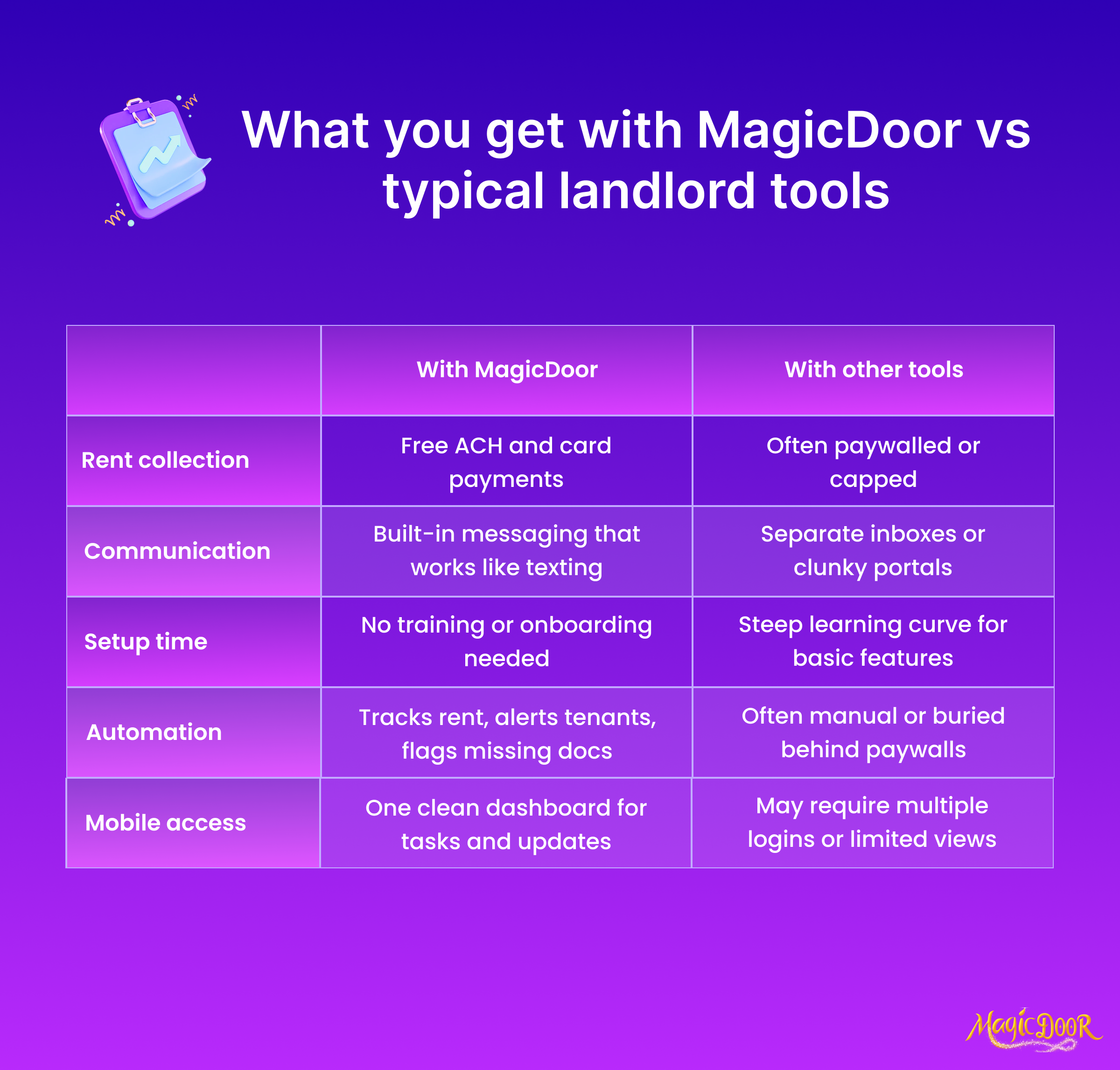
It flags missing documents, tracks rent payments in real time, and reminds tenants about lease dates or overdue balances without you needing to lift a finger. Tools like AppFolio and Buildium offer similar features, but typically come with steeper learning curves or paywalls that small landlords don’t want to deal with.
Other platforms may include a tenant portal, but few combine that with built-in communication tools that feel as natural as texting. With MagicDoor, everything, messages, tasks, alerts, happens inside one mobile-friendly dashboard, making it easy to stay responsive from anywhere.
For small landlords and self-managing owners, MagicDoor offers real value:
- Free rent collection (ACH and card options included)
- Clean dashboards with real-time updates
- No-cost access to leasing, maintenance, and communication features
- Works whether you manage one unit or a handful of rental listings
Many tools are built for professional property managers running 100+ units.
MagicDoor isn’t. It’s built for people who don’t have time for training sessions, don’t want to manage multiple logins, and need their management software to just work.
How to Choose the Right Landlord Software for a Small Portfolio
Choosing property management software for a small rental portfolio means filtering out features you don’t need, and focusing on tools that save time, not add complexity.
- Match tools to your unit count: Landlords managing fewer than 10 rental properties need something lightweight, not a platform built for enterprise teams.
- Go cloud-based, not desktop: Cloud tools don’t require installations, manual updates, or local file backups, and you can access everything from anywhere.
- Look for full mobile access: Mobile apps should let you send messages, track rent payments, and handle maintenance, not just view your dashboard.
- Automation matters more than size: Even with one unit, features like auto-reminders and lease tracking can cut hours of manual work each month.
- Avoid subscription fees when possible: For lean portfolios, paying monthly for basic management software doesn’t make sense. Plenty of tools now offer core features without a paywall.
Matching the right software to your workflow means fewer missed updates, less back-and-forth, and more time actually managing.
Conclusion
If you're managing rentals in 2025, using the right tools isn’t just helpful, it’s essential. Small landlords don’t need complicated dashboards or exaggerated systems. They need software that handles rent payments, maintenance, and tenant communication without adding more work.
The right property management software keeps everything in one place, lets you stay responsive, and makes the rental process feel a lot less manual.
Among the options out there, MagicDoor stands out for good reason.
It gives small landlords the automation, mobility, and communication tools they actually need, without the cost. No monthly subscription. No long onboarding. Just a smart platform that helps you manage rentals the way you already work.
Ready to try something built for landlords like you? Get started with MagicDoor today!
FAQ
What is the best CRM for property management?
The best CRM depends on your portfolio size and how you manage day-to-day tasks. MagicDoor, AppFolio, and Buildium all offer tools for tracking tenant communication, managing tasks, and organizing lease details.
What is the best rent collection software?
The best rent collection software makes payments easy for tenants and predictable for landlords. Platforms like MagicDoor, RentRedi, and Avail offer online payments, recurring charges, and auto-reminders, made to reduce missed or late rent without extra fees.
What is the biggest property management company?
Greystar is currently the largest property management company in the United States, managing hundreds of thousands of rental units nationwide. They focus on large-scale multifamily properties, not independent landlords or small portfolios.
Is there any software for real estate investors to manage tenants?
Yes, many platforms now support the needs of real estate investors managing multiple properties. MagicDoor, Stessa, and DoorLoop are popular among investors for tracking cash flow, expenses, and tenant activity.
What is the most popular property management software?
AppFolio and Buildium are among the most widely adopted platforms for professional property managers. For independent landlords and smaller teams, free tools like MagicDoor are quickly growing in popularity thanks to simple rent collection, tenant screening, and maintenance tracking.

